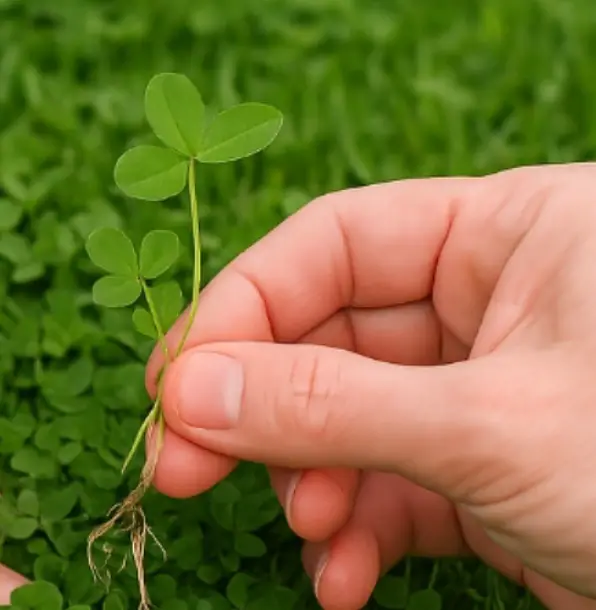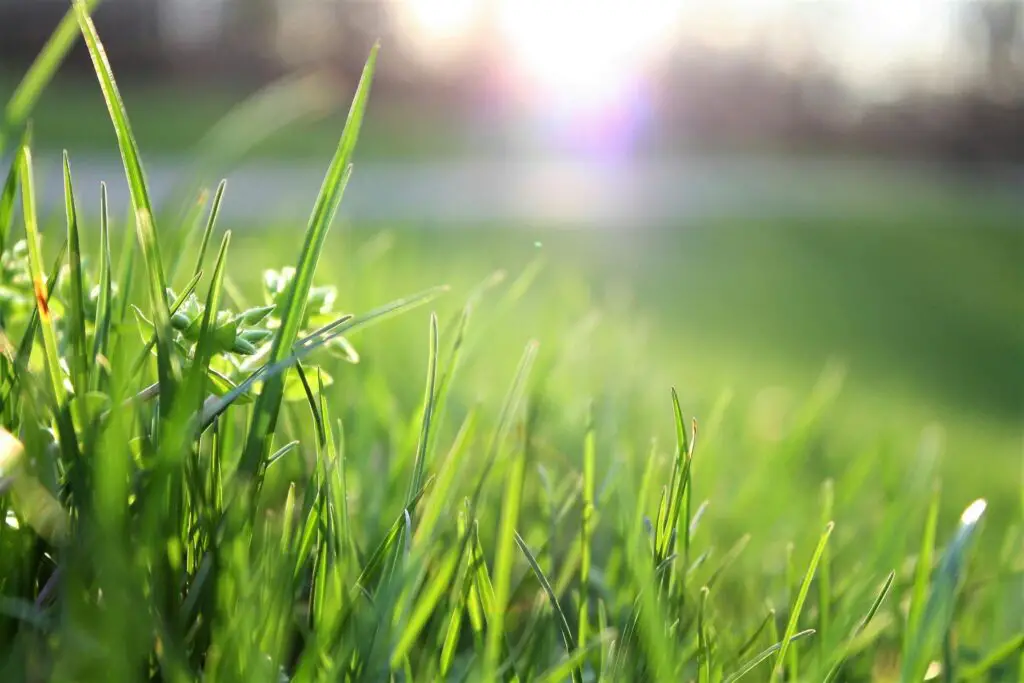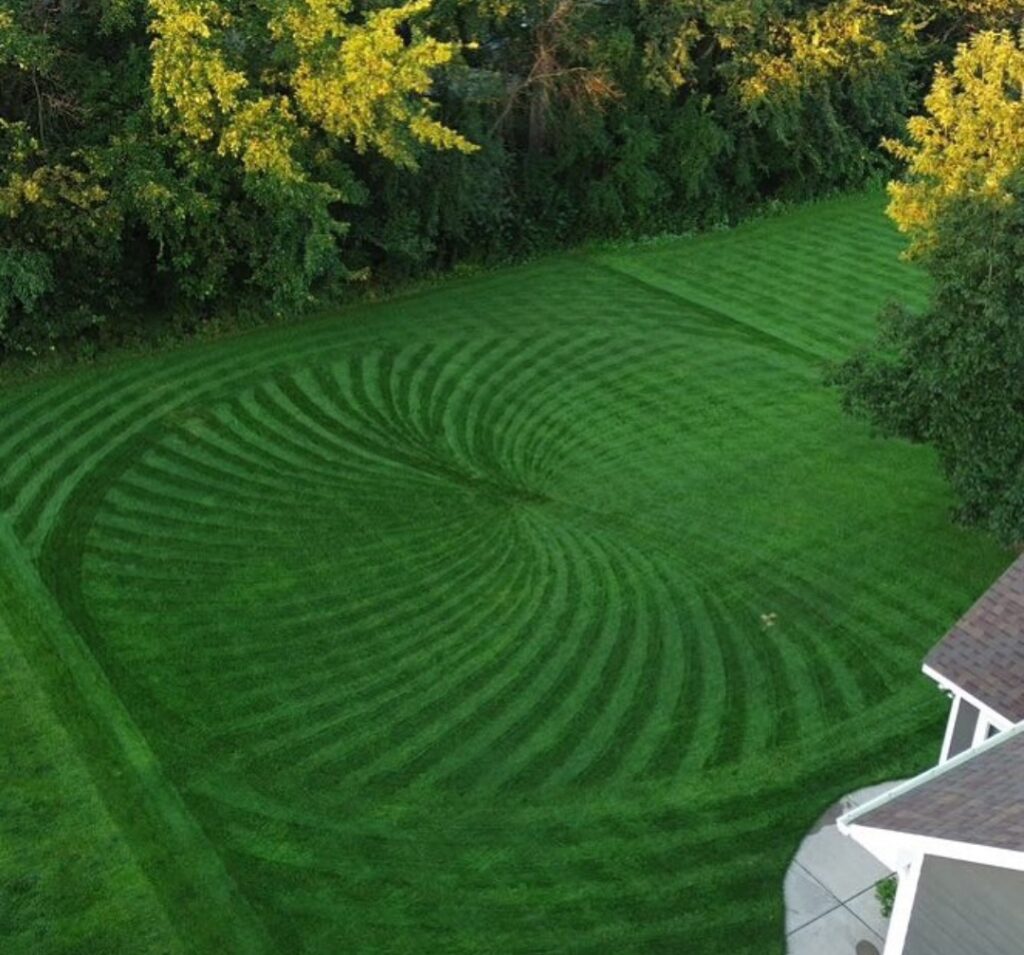Clover may look harmless with its tiny leaves and white blossoms, but it’s one of the most common and persistent weeds that can invade your lawn. For many U.S. homeowners, clover disrupts the clean, uniform look of a well-maintained yard. Once it takes root, clover spreads quickly and competes with grass for nutrients and space.
In this guide, we’ll cover the 10 best expert tips to eliminate clover from your lawn effectively. Whether you prefer natural methods or selective herbicides, you’ll find everything you need right here. Let’s bring back the lush, weed-free lawn you deserve.
- 1 How to Get Rid of Clover in Lawn
- 2 ✅ 1. Apply a Fertiliser High in Nitrogen to Your Lawn
- 3 ✅ 2. Raise Your Mowing Height
- 4 ✅ 3. Water Deeply But Infrequently
- 5 ✅ 4. Pull Clover by Hand (for Small Patches)
- 6 ✅ 5. Use a Natural Clover Killer: Vinegar and Dish Soap
- 7 ✅ 6. Use corn gluten meal as an adjuvant.
- 8 ✅ 7. Overseed Bare or Thin Lawn Areas
- 9 ✅ 8. Improve Lawn Soil Quality
- 10 ✅ 9. Use a Selective Herbicide (Clover-Safe)
- 11 ✅ 10. Maintain a Regular Lawn Care Schedule
- 12 Here’s a quick seasonal routine:
- 13 🌿 Bonus Insight: Should You Even Get Rid of Clover?
- 14 🌟 Final Thoughts
How to Get Rid of Clover in Lawn

✅ 1. Apply a Fertiliser High in Nitrogen to Your Lawn
Clover thrives in soil with low nitrogen levels. When your lawn is underfed, clover takes the opportunity to move in and dominate the space.Applying a fertiliser high in nitrogen is one of the best strategies to combat clover. This improves your grass’s health and helps it crowd out weeds naturally over time.
Select a slow-release fertiliser to lower the chance of your lawn burning and to deliver nutrients gradually.The best times to fertilize are in early spring and again in fall, when your grass is actively growing.
Tip: Avoid over-fertilizing, which can damage your lawn. Use a soil test kit to check nitrogen levels before applying.
✅ 2. Raise Your Mowing Height
Cutting your grass too short creates the perfect environment for clover to grow. Short grass allows more sunlight to reach clover patches, encouraging them to spread.Rather, keep your lawn at a height of roughly three inches and lift your mower blade.
This longer grass creates shade that blocks sunlight from reaching clover, making it harder for it to survive and spread. Plus, taller grass retains more moisture and develops deeper roots, which improves the overall health of your lawn.
Tip: Keep your mower blades sharp to avoid tearing grass blades, which can stress the lawn and invite more weeds.
✅ 3. Water Deeply But Infrequently
Clover is drought-tolerant and can survive with minimal water, while most turfgrasses prefer consistent moisture. A proper watering schedule can give your grass the upper hand.Water deeply and infrequently—roughly 1 inch per week—instead of frequently using shallow water.
This encourages your grass to grow deeper roots, which improves drought resistance and reduces clover’s ability to compete. Try to water early in the morning to prevent evaporation and reduce the chance of fungal diseases.
Tip: While watering the yard, place a tuna can on it. You’ve hit around 1 inch of water when it fills up.
✅ 4. Pull Clover by Hand (for Small Patches)
If you notice just a few clover patches in your yard, the best and fastest solution may be to pull them out by hand. This is especially effective right after it rains, or after watering your lawn, when the soil is soft.
Make sure to remove the entire root system, or the clover will regrow. Use a weeding tool or garden fork to get a better grip and reduce the chance of leaving roots behind.
Tip: After removing clover, fill in the bare spot with grass seed and topsoil to prevent more weeds from sprouting.
✅ 5. Use a Natural Clover Killer: Vinegar and Dish Soap
For those who prefer eco-friendly lawn care, you can make a homemade clover killer using simple ingredients. In a spray bottle, mix one cup of water, a few drops of dish soap, and one cup of white vinegar. Apply it directly to the clover on a sunny day.
The vinegar dehydrates the clover, while the dish soap helps it stick to the leaves. However, this method is non-selective—it will kill grass if sprayed accidentally—so use it only for spot treatment.
Tip: Use cardboard or plastic to shield surrounding grass when spraying clover with this homemade solution.
✅ 6. Use corn gluten meal as an adjuvant.
An efficient natural pre-emergent herbicide that stops clover seeds from sprouting is corn gluten meal. It serves as a slow-release nitrogen fertiliser and is a by-product of processing corn. When soil temperatures start to climb in the early spring, apply corn gluten meal. It won’t kill existing clover, but it’s a great way to stop new growth from emerging later in the season.
Tip: Water the lawn after applying corn gluten, then avoid watering again for 5–7 days to allow it to be effective.
✅ 7. Overseed Bare or Thin Lawn Areas
Clover loves to grow in thin, bare spots where grass is weak or missing. To combat this, overseed your lawn regularly—especially in early spring or fall. Overseeding helps fill in gaps, improve turf density, and crowd out clover naturally.
Choose a high-quality grass seed mix that matches your region’s climate. Once seeded, keep the soil moist until the new grass is fully established.
Tip: Mix a small amount of compost with the seed to improve germination and boost nutrients naturally.
✅ 8. Improve Lawn Soil Quality
Poor soil leads to poor grass—and that’s an open invitation for clover. To boost your lawn’s resilience, focus on improving your soil’s health. Start with a soil test to identify any nutrient deficiencies, especially nitrogen.
If your lawn is compacted, aerate it to allow air, water, and nutrients to penetrate. Then add organic compost or topsoil to improve structure and boost microbial life.
Tip: Aerate your lawn every fall for cool-season grasses and in late spring for warm-season lawns.
✅ 9. Use a Selective Herbicide (Clover-Safe)
If a significant portion of your lawn has been overtaken by clover, targeted herbicides may be a useful remedy. Seek out products with the label “safe for lawns” that are designed to eradicate broadleaf weeds like clover.
Apply these herbicides on a quiet, dry day, paying close attention to the directions on the label. BioAdvanced Lawn Weed Killer and Ortho Weed B Gon are reputable choices for homes in the USA.
Tip: Don’t mow your lawn for at least 48 hours before and after applying herbicide to get the best results.
✅ 10. Maintain a Regular Lawn Care Schedule
Ultimately, the best way to keep clover out is to maintain a strong, healthy lawn year-round. A consistent lawn care schedule helps your grass outcompete weeds naturally, without relying heavily on herbicides or treatments.
Here’s a quick seasonal routine:
Spring: Fertilize, test soil, overseed
Summer: Mow high, water deeply, remove weeds
Fall: Aerate, feed again, overseed bare spots
Winter: Clear debris, prep for spring
> Tip: Keep a lawn care calendar or set reminders on your phone so you stay consistent all year long.
🌿 Bonus Insight: Should You Even Get Rid of Clover?
While this article is all about removing clover, it’s worth noting that clover isn’t all bad. In fact, some homeowners are switching to clover lawns on purpose because they:
Require less fertilizer and water
Stay green during drought
Are pollinator-friendly for bees and butterflies
Grow in poor soil conditions
If you’re environmentally conscious and prefer a low-maintenance lawn, a clover-grass mix might be a smart alternative!
🌟 Final Thoughts
Getting rid of clover in your lawn is totally possible—with the right tools, knowledge, and patience. Whether you’re going the natural route or using lawn-safe herbicides, consistency is key. Follow these 10 expert tips, and you’ll be well on your way to a lush, green, clover-free lawn that looks great all year round.
Take it one step at a time, and don’t forget to treat the soil, not just the symptoms. The best defence against weeds like clover is always a healthy grass.
Investing in quality grass seed and maintaining proper watering and mowing practices will also contribute significantly to the overall health of your lawn. By nurturing your grass and keeping an eye on potential weed invasions, you’ll create a thriving outdoor space for you and your family to enjoy.




